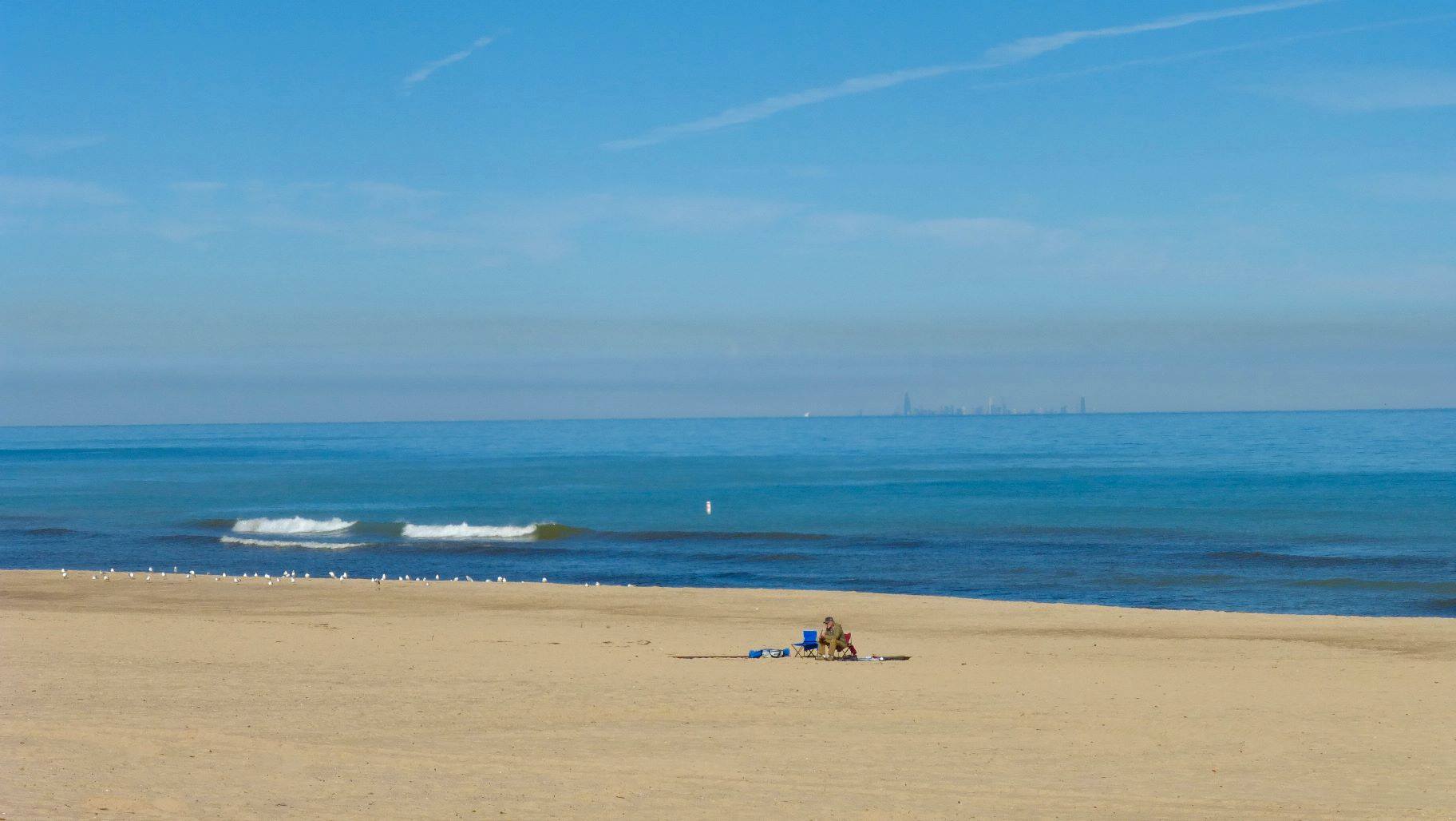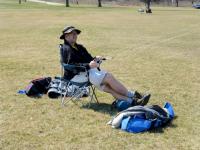-
Posts
3,005 -
Joined
-
Last visited
-
Days Won
60
Content Type
Profiles
Forums
Gallery
Downloads
KL Shop
Blogs
Articles
Everything posted by makatakam
-
Look at the bright side, though. It can only get really good from this point on. Unless it gets worse. But then it will get sooooo good it will be almost unbearably good.
-
I think a direct north or south wind, either up or down the gorge will give us a better idea of the possibilities. Talking to the wind gods right now and making the arrangements. Should be good tomorrow.
-
In the Midwest you would fly about three days per year.
-
When you fly the kite to the bottom of the window, down below the bridge, the wind will not let the kite get behind you, unless you hit the bottom at full speed. If it does fly beyond vertical, it will begin to stall, but because gravity is below you now it can't drop out of the sky and will merely hang there momentarily, and the wind will push it downwind, back to being somewhat in front of you. At that point you turn around and fly back up. Think of it this way: You are flying your kite at your favorite field. You attach a very flat bag to the back of your kite and fill it with enough helium so the kite becomes neutrally buoyant, so that you can manually put it 5 feet off the ground and it just stays there, moving neither up nor down in a dead calm. Now add wind. Would you have any problem flying it? By doing this you have effectively taken gravity out of the equation. Definitely get video. Pay someone if you have to; I'll cover it!
-
Sorry, Wayne, have to disagree with you on this one. The wind will have exactly the same effect on the kite below you as it does above you. The only difference is the lack of "up" gravity. Should be about the same as flying at the sides of the window, minus the adjustment for gravity. Imagine you're standing on your head and flying when the kite is below the pilot, or standing upright in zero gravity. The effect at the bottom will be similar to flying at the top of the window, in that the wind will not allow you to fly the kite past vertical if you're using a decent amount of brake.
-
On the ground, the wind window can be represented by a 1/4-sphere. Remove the ground and the window becomes a 1/2-sphere. You should be able to fly to and away from the edge of the window in any direction, including below you. Obviously, the wind should be blowing in a direction as perpendicular to the bridge as possible, at least on the first attempt, but I would attempt it if it's 45 degrees or more.
-
This video clearly shows how much your control has improved. Keep up the good work. Even at higher speed you look smooth and precise. (and good wind doesn't hurt either)
-
Hi, White Rabbit, and welcome to the forum. I look forward to flying with you some day. I'm in the Chicago area. Feel free to PM me anytime you're in town. There are at least half a dozen flyers in the west and northwest suburbs here, and several more within 90 minutes. Many good inland fields as well as the beaches of Lake Michigan on which to fly. Odds are good of finding someone to fly with in this neck of the woods. Have fun, smile and don't forget to breathe.
-
HI, Frankie, and welcome to the forum. I'm in the Chicago area. Looking forward to flying with you someday.
-
Also remember that the vast majority of all those twists that appear to be in your lines when you lay them out will disappear once you put some tension on the line, leaving only a couple to deal with. Watch the line management tutorial several times before you go out the first time, listen carefully to the instruction. It is GOSPEL, and will save you tons of grief. Watching the set-up vid will help too. Most of all have fun, smile and don't forget to breath.
-
Extra hours of work now = extra Revs later. It's a nice equation.
-
One more for you to peruse. Can't really see it well, but the vertical lettering on the back is a blue fade from right to left on the first two, bottom to top on the third.
-
Hi, Mr.Lane, and welcome to the forum. Good to have you aboard. I look forward to flying with you someday.
-
-
.thumb.jpg.53aabc63a639af8d375b2c92cf2e13f8.jpg)
Karma - Prism Quantum *ready to fly* (10/24/15)
makatakam replied to lmoaks's topic in Karma Drawings
@SHBKF -- No, what it means is that an advanced pilot can fly a cardboard box if necessary. -
-
Hey, JB, what if the RNG decides everybody should have one? Scary thought?
-
What if the RNG decides to keep it for itself? Then there would be, a very happy RNG.
-
There's a really good kite shop in Two Rivers. Unique Flying Objects www.uniqueflyingobjects.com/ 2022 Washington St, Two Rivers, WI 54241(920) 793-9599
-
.thumb.jpg.53aabc63a639af8d375b2c92cf2e13f8.jpg)
First Person View Kite Flying???
makatakam replied to Hasek's topic in KAP - Kite Aerial Photography
Is that Holland, Michigan? -
Form should follow function, by all means. Keeping it simple. Of course, 120-90-60-30 works also, but I would probably never use the 60's, or the 50's as in Rob's example. A foot short after the cut-down doesn't make much difference, at least to me.
-
If you only have one or two sets, maybe three, you will appreciate having the following in the order given, for the reason given. 1. 80'x90# for flying alone, practice, or flying with another flyer or two in limited space. 2. 120'x90# for flying with others at fests, or when you have the space, or in strong wind when you want to slow the kite down. 3. 30'x90# for really small flying areas. Just remember, everything happens really fast on 30' lines -- don't use them near people or obstacles until you are beyond 110% confident of your ability to control the kite. In the Midwest, this is a good way to begin. If it fits within your budget, get all of them at once. Remember that a 120' set can be cut down into shorter sets as they begin to wear out. This will happen sooner or later, depending on how often you use them. I do most of my flying on 80's. When flying with others 120's. I prefer 40' as my short set. Your mileage WILL vary.
-
Wayne, Wayne, Wayne. You know it's an addiction. He's planning ahead for the kites that will eventually be in his bag anyway, the Indoor and the SuperBlast 2-4 or 4-8, right?
-
An upright hover is accomplished by tilting the handles forward and backward until you have them in a position where the kite stops moving forward or backward, a "balance point" that is never really static. You will need to constantly adjust this angle of attack to keep the wind from moving it in some direction. Tilting one handle at a time, or both in opposite directions, is what makes the kite turn, pivot, or spin, depending on the amount of input. Use small inputs for better control, and keep the kite moving slowly at first. This will give you more time to make corrections. Hard to make corrections to speed or direction if it has already hit the ground, right? Start with the top lines on the knots furthest from the handles, and with the kite upright, try to launch. Won't take off? Bring the lines in one knot at a time until you can launch it. With time, begin moving the lines out one knot each time you fly and try launching. The further out they are, the more control you will have. There are three stages of flying a Rev. : 1. The kite flies you 2. You fly the kite 3. The kite and you fly as one Stage 3 is achieved rarely, even by experienced flyers. You'll know when it happens by how still your mind becomes. Most of us spend most of our time flying in stage 2. How quickly you make it from stage 1 to stage 2 depends on how much time you spend flying, and being able to clear your mind of distractions as you fly will improve your ability to learn. More important than anything else is simply this: Have Fun, Smile, and don't forget to breathe.
- 12 replies
-
- 1
-

-
- rev
- revolution
-
(and 3 more)
Tagged with:








